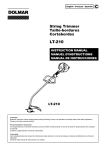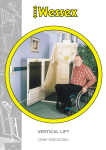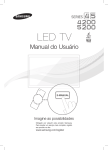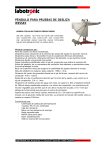Download Wessex VM Service Manual Part 1
Transcript
VM RANGE Service Reference Manual Model Numbers: VM30,VM31,VM36,VM50,VM51 and VM56 Serial Numbers 1000 upwards Copy 070 Contents Product: VM Service Procedure Document Ref: VM00 5600 Description: Contents Page Compiled by: M.Smith/K.Farthing Issue: 2 Date: 08 March 2007 Section 1: Introduction Section 2: Safety Advice Section 3: Service Procedure Section 4: Electrical Drawings Section 5: Setting Instructions Section 6: Hydraulics Section 7: Lubrication Schedule Section 8: Replacement Parts Section 9: Troubleshooting Section 10: Amendment Record Wessex Lift Co Ltd, Budds Lane, Romsey, Hampshire, SO51 0HA SECTION 1 INTRODUCTION Introduction Product: VM Service Manual Document Ref: VM00 5610 Description: Introduction Compiled by: M.Smith/K.Farthing Issue Number: 2 Date: 08 March 2007 Return to contents Introduction to Servicing Preventative checks and routine maintenance are essential to keep the lift in proper working order. Over the long term they may save money and will ultimately ensure safe and reliable operation of the lift and therefore customer satisfaction. Both the lift user and the agency responsible for the funding of maintenance should be made aware of the need for regular maintenance by Engineers correctly trained to work on that particular item of equipment. The Wessex VM Home Lift should be checked and serviced at 6 monthly intervals, this is in accordance British Standards recommendations. The Service Engineer will be required to carry out all of the routine safety checks as detailed on his Service Sheet, which should be based on the appropriate appendix in BS 5900 (1999). The checking, setting and adjusting of the lift must be in accordance with our own detailed procedures as laid out in our Installation / Service Reference File, available from Wessex Lift Co Ltd, Budds Lane, Romsey, Hampshire, SO51 0HA reference can also be made to the notes contained within this manual. Whilst working on the lift extreme care must be exercised whenever any panels are removed that leave moving or electrically live parts exposed. The lift user and any other persons within the property must be made aware of the maintenance activity before it is commenced and if appropriate the lift and it’s controls should be cordoned off. The Engineer should be aware of the requirements of the Health and Safety at Work Act 1974 and take care to adhere to this. The lift user and owner can help to be part of an effective maintenance program by being fully trained in the use of the lift and: Informing the Maintenance Company of any unusual noises, operational difficulties, or of anything that appears to be visually incorrect. Informing the maintenance company and the lift owner of any change of use, i.e. A change of type and weight of wheelchair A significant change of user’s weight or disability A change in user An installation at another site A change of duty cycle (number of starts per hour) Ensuring that the lift is kept clean and clear from any obstructions. Testing the lift alarm and battery backed functions on a weekly basis Not exceeding the lift’s maximum safe working load. Ensuring that children and pets are kept well away from the lift when in use. 1 Wessex Lift Co Ltd, Budds Lane, Romsey, Hampshire, SO51 0HA Section 1 Introduction Product: VM Service Manual Document Ref: VM00 5610 Description: Introduction Compiled by: M.Smith/K.Farthing Issue Number: 2 Date: 08 March 2007 Glossary of Terms REFER TO THE INSTALLATION / SERVICE REFERENCE FOLDER FOR SPECIFIC SETTING INSTRUCTIONS. st ANTI CREEP SWITCH – Micro switch used to re-level lift after it has crept down from the 1 floor position. Operates with the door open or closed. SAFETY EDGE – Sprung-loaded, switched, moving edge around top periphery of lift car. Used to sense an obstruction during travel and will stop lift if activated. Lift can be reversed away from obstruction. FLOATING PLATFORM – A switched plate covering the whole underside of the lift car. It stops the lift on descent if it touches an object beneath the lift and will also stop the lift on ascent if it is pulled down from the lift. When the lift is parked at the upper level it helps to form a fireseal on the underside of the ceiling aperture. FLOATING PLATFORM ZONE SWITCHES - Switches used to bypass the floating platform switches when the lift is almost fully descended on descent and the platform is almost touching the aperture on ascent. POWER PACK – An assembly comprising of a pump, motor, reservoir, lowering, isolating, and emergency lowering valves. OVER RUN TIMER – A manual reset timer located on the main PCB, used to isolate the lift if the pump motor should run for a time exceeding the pre-set duration. SHOOT BOLT – A solenoid bolt located at low level at the rear of the lift car. In case of fire causing the ram seals to leak this bolt will hold the lift at the upper floor, thus maintaining the fireseal through the floor. TRAP BOARD – A board, which covers the aperture opening when the lift is at the lower level and is raised as the lift, ascends. The board is switched so that if obstructed it will stop the lift. TRAP BOARD ZONE SWITCH – Micro switch positioned in the rear of the aperture liner. It is used to override the trap board down safety switches once the trap board is located in the aperture, thus allowing the lift and trap assembly to separate and the lift car continue its descent. FLOOR LEVELLING SWITCH – Switch used to prevent the lift rising more than 10mm above the upper level due to expansion within the ram (caused by temperature change of the hydraulic fluid). DOOR BOOST SWITCH – Switch used to give a boost of power to the door actuator as it is almost closed, thus powering it up and onto the door latch brackets . 2 Wessex Lift Co Ltd, Budds Lane, Romsey, Hampshire, SO51 0HA Section 1 Introduction Product: VM Service Manual Document Ref: VM00 5610 Description: Introduction Compiled by: M.Smith/K.Farthing Issue Number: 2 Date: 08 March 2007 Lift Door Operation The lift is fitted with a hinged door which can be either manually operated, or as an option, power operated. In both cases the door can only be unlocked electrically when the lift is at a recognised floor level (if the lift is not at a floor level emergency opening can be effected using the key provided). A particular feature of this lift is that the door handing can be altered with relative ease with very few parts having to be ordered. Operation of manual door A momentary press of the door safety edge, or door release button within the lift will energise the lock solenoid and allow the door to be pushed / pulled open. To close, the door is simply pushed / pulled shut. Operation of power door A momentary push of either the in-car or call station door button will activate the lock solenoid and door actuator and allow the door to open / close as required. A momentary push of the door safety edge will energise the lock solenoid only, thus allowing manual operation of the door. The power door is fitted with a 24 v. DC actuator, a “breakout” mechanism (to allow manual use of the door), open limit switch and door boost switch (both fitted adjacent to the actuator) and a door close limit switch (fitted behind the lift side panel). A timer that operates if either limit switch does not activate within 20 seconds of the actuator being energised protects the actuator. Correct operation of the door limit switches can be ascertained by observing the action of LED.s 16 and 17 on the PCB. Specific setting instructions and description are given in the powered door setting instruction VM10 2130 (3 sheets). 3 Wessex Lift Co Ltd, Budds Lane, Romsey, Hampshire, SO51 0HA Section 1 Introduction Product: VM Service Manual Document Ref: VM00 5610 Description: Introduction Compiled by: M.Smith/K.Farthing Issue Number: 2 Date: 08 March 2007 Door Interlock Switches The lift is designed to ensure that it will not travel unless the door is closed and locked. This is achieved through the use of a microswitch (activated by the door latch arm VM10 0676 being pressed down by the latch plate VM10 0656) and a magnetic proximity switch which complete the safety circuit when the door is closed and locked (refer to setting instruction VM00 2120). The Service Engineer should check the operation of the door lock and interlock switching arrangement at each visit. To test the magnetic door switch – stop the lift at the lowest level and open the door. By hand, press and hold down the door latch arm (located just above the lowest latch bracket) and press the “up” control button. The lift should not travel, if it does a fault with the magnetic switch must be rectified. There is also an extra safety circuit incorporated on the PCB which prevents the lift from working if the door latch arm jams down. It will only reset when the door latch arm is functioning correctly. This can be tested as follows: Stop the lift at the lowest level, with the door closed, hold the door latch arm in position and open the door, whilst still holding the door latch arm down operate the “up” button, the lift must not move. On the PCB it will be seen that L.E.D. 25 will illuminate to confirm a fault condition. 4 Wessex Lift Co Ltd, Budds Lane, Romsey, Hampshire, SO51 0HA Section 1 Introduction Product: VM Service Manual Document Ref: VM00 5610 Description: Introduction Compiled by: M.Smith/K.Farthing Issue Number: 2 Date: 08 March 2007 Trap Board As the lift ascends and descends it picks up and lowers a trap-board that forms the floor to cover the aperture when the lift is at the lowest level. If the trap-board is impeded as the lift travels it will stop the lift. This is the case whether the lift is ascending or descending. In either case it is possible to reverse the lift away from an obstruction by selecting and pressing the appropriate lift control button. The switches that sense an obstruction are mounted on the lift carriage behind the upper rear panel. The lift will also stop if the trap assembly separates from the lift whilst the trap is still in a raised position. To allow the lift to fully descend when the trap-board is in effect impeded by the aperture there is a trapboard zone switch which is mounted in the rear of the aperture. When the trap operates this, it switches out the trap-board “down” safety circuit and thus allows the lift to separate from the trap and continue its descent. WARNING! The material used for the trap-board maybe weakened if it is allowed to become wet. This fact should be considered when carrying out maintenance checks. The lift user is also made aware of this in their User Instruction Manual. A weakened board must be replaced. 5 Wessex Lift Co Ltd, Budds Lane, Romsey, Hampshire, SO51 0HA Section 1 Introduction Product: VM Service Manual Document Ref: VM00 5610 Description: Introduction Compiled by: M.Smith/K.Farthing Issue Number: 2 Date: 08 March 2007 Batteries The lift operates on a control circuit voltage of 24 volt DC Battery back up is provided by 2 off 12 volt, sealed lead acid batteries that are kept charged via a charging circuit on the main PCB. The batteries provide back up to the following functions in case of mains power failure: Lift lighting (1 light only will illuminate). Lift alarm. Emergency lowering from within the lift, with all safety circuits still operative. Lift stop and safety circuits. Door operation (power and manual doors). At each service visit the battery charging voltage should be checked with the batteries disconnected .It should be set at 27.5 volt DC +/- 0.1v with adjustments being effected using R15 on the main PCB. The batteries are constructed of a fire resistant material and should always be replaced with batteries rated at the correct voltage, capacity and fire rating. It is recommended that the batteries be replaced at 3-year intervals. 6 Wessex Lift Co Ltd, Budds Lane, Romsey, Hampshire, SO51 0HA Section 1 SECTION 2 Safety Advice Important Safety Advice Product :VM Range Document Ref : VM00 5620 Description : Safety advice Compiled by : K.Farthing Issue: 2 Date : 08 March 2007 Return to contents The following pages offer important safety advice to consider when servicing the lift. Before commencing the service please read and become familiar with the advice given. Unsupervised Children Advise the user, and if applicable the householder, that unsupervised children must not be allowed near the lift when it is in use, especially at the first floor where there is a risk of falling into the lift during descent. Present the householder with the document ‘Health and Safety at Work Guidelines’ before commencing the service. Safety Barriers Where there is a risk to the public, safety barriers should be used at both levels. Panels and Covers (Movable guards) With the lift in motion, be aware that trapping and shearing hazards will be prevalent when panels and covers are not fitted. All panels and covers must be fitted before the lift can be commissioned and handed over to the user. You should also familiarise yourself with our documents given on the following pages: Safety When Working on the Lift Safety and Hydraulic Systems VM - Manual Handling Return to top 1 Wessex Lift Co Ltd, Budds Lane, Romsey, Hampshire, SO51 0HA Section 2 Important Safety Advice Product :VM Range Document Ref : VM00 5620 Description : Safety advice Compiled by : K.Farthing Issue: 2 Date : 08 March 2007 SAFETY WHEN WORKING ON THE LIFT Safety must be regarded as of paramount importance when working on any lift. Normal workshop practices should be followed when carrying out installation, repair or service. General Safety Considerations Before carrying out work on a lift, precautions should be taken to: 1. Read the Installation and Service Manuals as appropriate. 2. Ensure that a competent engineer carries out the work. 3. Ensure that bystanders are not exposed to risk. 4. Wear the correct personal protective equipment and clothing for the task being carried out, e.g. safety glasses, hearing protectors, gloves, protective footwear, overalls, etc. 5. Adequately support the lift if any of the hydraulic system is being worked upon whilst the lift car is above the ground floor. Laceration Hazards Whilst the lifts are fully finished it should be realised that metal components may have sharp edges, care should therefore be taken during handling of components. Electrical Hazards The lift operates on a 240V A.C. supply and a 24V D.C. control circuit, care should therefore be taken when working on the lift electrical system. Where appropriate, disconnect the lift power supply and batteries before carrying out work on the lift, this is to stop any risk that may arise due to unintentional movement of the lift, this could happen by the client pressing a remote call station without the engineer’s knowledge. Leaving in a safe condition after maintenance The lift must never be left operable if there is any risk to those using it. All lift panels, especially the rear panel must be refitted after completion of works. You should always remind the householder that unsupervised children should not be allowed to play / stand near the lift whilst it is in motion, there is a risk that they could fall into the lift car as it descends. Trapping and shearing hazards The Service Engineer must take extreme care if the lift is operated and moved with any panels removed. He should also be aware that the lift could be operated by someone other than himself whilst he is working on the lift. Return to top 2 Wessex Lift Co Ltd, Budds Lane, Romsey, Hampshire, SO51 0HA Section 2 Important Safety Advice Product :VM Range Document Ref : VM00 5620 Description : Safety advice Compiled by : K.Farthing Issue: 2 Date : 08 March 2007 SAFETY AND HYDRAULIC SYSTEMS Wessex Hydraulic Lifts operate with high hydraulic pressures that are potentially dangerous. Before removing any components from the hydraulic circuit ensure that there is no hydraulic pressure in the system. Lowering the lift onto the ground or a suitable support should do this and continuing to operate the manual lowering valve for a short period after the lift has ceased any visual movement. If a fluid leak is suspected, do not attempt to trace the leak by wiping clean the pipes, with the hydraulic system under pressure, to establish where the leak is coming from. High-pressure jets of fluid are capable of penetrating skin. Visually inspect the suspected area to find the leak. If it is desired to wipe pipes clean, first release the hydraulic pressure. Hydraulic Fluid Health and Safety Normally safe in use, however attention should be paid to the handling and storage information and to any necessary first aid measures. Handling and Storage Handling: Avoid prolonged or repeated skin contact. Any person with particular skin sensitivity to mineral oil should wear gloves or use a barrier cream. Avoid inhalation of vapour, mist or fumes. Do not wear contaminated clothing. Storage: Keep containers tightly closed. First Aid Measures Eyes: Flush the eye with copious amounts of water. No emergency measures are necessary but if adverse eye effects follow, refer for medical attention. Skin: Wash the contaminated skin thoroughly with soap and water. No emergency measures are necessary but if adverse skin effects follow, refer for medical attention. Inhalation: Remove the effected person to fresh air. If recovery is not rapid, obtain medical attention. Ingestion: Do not induce vomiting. No emergency measures are needed but if adverse health effects follow, refer for medical attention. Additional Information Injection under the skin of mineral oil under high pressure is a serious emergency requiring IMMEDIATE medical attention and hospitalisation, even if there may be little in the way of symptoms or signs to suggest the severity of the injury. Return to top 3 Wessex Lift Co Ltd, Budds Lane, Romsey, Hampshire, SO51 0HA Section 2 Important Safety Advice Product :VM Range Document Ref : VM00 5620 Description : Safety advice Compiled by : K.Farthing Issue: 2 Date : 08 March 2007 VM – MANUAL HANDLING Lifting and moving loads by hand is one of the most common causes of injury at work. Many manual handling injuries result from repeated operations, but even one bad lift can cause a lifetime of pain and disability. It is the responsibility of the employer to avoid the need to carry out manual handling which creates a risk of injury. Where avoidance is not reasonably practicable, an assessment must be undertaken. Before any equipment is transported to site a Risk Assessment is undertaken. Prior to attending site to install, make yourself familiar with this Risk Assessment and prepare yourself for any action which may be recommended, for example, use of a mobile hydraulic lifting hoist. When installing or removing a lift: • Ensure that access to and from the site is free from tripping and slipping hazards, • Plan a route from your vehicle to the site which minimises the need for manual handling, • Share heavy or awkward loads, but remember that some workers are stronger than others and no one is immune from injury. Anyone injuring their back at work should be encouraged to report the injury, get early medical attention and return only gradually to handling duties. Further guidance is provided in the following documents: Safety and Hydraulic Systems Safety When Working on the Lift Return to top 4 Wessex Lift Co Ltd, Budds Lane, Romsey, Hampshire, SO51 0HA Section 2 SECTION 3 Service Procedure Interior Panel Removal Product : VM Service Manual Document Ref : VM00 5630 Description : Panel Removal Compiled by : K.Farthing Issue: 1 Date : 08 March 2007 REMOVAL OF REAR PANEL REFER TO THE INSTALLATION / SERVICE REFERENCE FOLDER FOR SPECIFIC SETTING INSTRUCTIONS. WARNING The rear panel must be refitted after maintenance and extreme care taken if the car is to be operated with panels removed. The rear panel is manufactured in 2 sections and is easily removed with the use of basic service tools. Its removal will allow access to: Up and down limit switches. Anti-creep switch. Power door speed control resistor. Floating platform zone switches. Shoot bolt. PCB. Batteries. Trailing cable connections. Carriage sliders. Trap board up and down safety circuit switches. Trap plunger mechanisms. Floor leveling switch. To remove the panels proceed as follows: Remove the 2 off screws securing the lower rear panel, each screw is located just beneath the lamp pod in the rear corner of the lift. The lower panel can be pulled clear and set aside. The upper rear panel is secured with 2 screws through its lower return edge, once these screws are removed the panel can be lifted clear. Replacement is the reverse of the above. REMOVAL OF SIDE PANELS REFER TO THE INSTALLATION / SERVICE REFERENCE FOLDER FOR SPECIFIC SETTING INSTRUCTIONS. The side panels must be refitted after maintenance. Removal of the side panels will allow access to: The door interlock switch. The floating platform switches (up and down safety circuits). The floating platform ropes and gas strut assemblies. The floating platform rope guide rollers. The power door close limit switch. The lift telephone socket. Each side is fitted with 2 internal panels. The forward most side panel should be removed first and can be removed by removing 3 screws securing its rearmost edge, and flexing the panel as it is lifted clear. 1 Wessex Lift Co Ltd, Budds Lane, Romsey, Hampshire, SO51 0HA Section 3 Interior Panel Removal Product : VM Service Manual Document Ref : VM00 5630 Description : Panel Removal Compiled by : K.Farthing Issue: 1 Date : 08 March 2007 Replacement is the reverse of the above. You should ensure that the rear most panel is adequately fixed to prevent undue panel vibration. REMOVAL OF DOOR ACTUATOR COVER REFER TO THE INSTALLATION / SERVICE REFERENCE FOLDER FOR SPECIFIC SETTING INSTRUCTIONS. The door actuator is mounted at low level in the base of the door. The small panel covering it also gives access to the door open limit switch and the door boost switch. To remove the cover: Open the door fully. Remove the screws fitted along the upper and lower edges of the cover. Replacement is the reverse of the above. 2 Wessex Lift Co Ltd, Budds Lane, Romsey, Hampshire, SO51 0HA Section 3 Service Procedure Product: VM Vertical Lift Document Ref: VM00 5640 Description: Service Procedure Compiled by: K.Farthing Issue: 3 Date: 08 March 2007 Return to contents ITEM 1.0 PROCEDURE Internal Panels • • 1.1 Remove the large internal panel on each side of the lift. These are held on by 3 self tapping screws in a channel at the rear of the panel. Unclip the control console by removing the 4 plastic clips and remove the panel. The key holder in the opposite panel can be left in place. The panels are also held to the lift frame with Velcro type pads. Unscrew the 2 M4 pozi pan screws at the top of the lower rear panel.This panel is also held on at the bottom by Velcro pads.The upper rear panel is removed by removing the 2 M4 pozi pan screws under the lip at the bottom of the panel. Door • • • • • Check the latch nibs are smooth and that the latch plate strikes both nibs at the same time to ensure a smooth closing operation. Check that the door can be opened using the emergency release key. Check the mechanical and electrical door interlocks are functioning correctly.With the lift at the lower floor and door open, press the mechanical interlock.Fig 1. Press the up button.The lift should not travel. Check that the door boost is correctly set. This switch is to give the door a final burst of speed at the end of the closing cycle and should be set to operate 10mm before the door closes.Fig 2 The other switch on the assembly is the door open limit switch.(Only applicable on models earlier than serial number 7000) Check that the flap on the underside of the door is free.Lubricate if required. Fig 1 • Fig 2 Lubricate door link arm pivot Fig 3 and break out plates Fig 4 Fig 3 Fig 4 1 Wessex Lift Co Ltd, Budds Lane, Romsey, Hampshire, SO51 0HA Section 3 Service Procedure Product: VM Vertical Lift Document Ref: VM00 5640 Description: Service Procedure ITEM 1.2 Compiled by: K.Farthing Issue: 3 Date: 08 March 2007 PROCEDURE Door continued • • If the door open or closing speed requires any adjustment this can be done by adjusting the rings on the variable resistor at the back of the lift car. The orange wire is door closing and the white wire is door opening.Fig 5 If the door judders as the the it opens this is an indication that the door boost switch is being held on too long. Adjust the boost switch.Fig 2 This item is not applicable on lifts with serial numbers below 7000 Fig 5 1.3 Trap assembly • • • Ensure that the trap up and down safety switches function correctly when the lift is in travel.Fig 6 Lubricate trap arm socket plunger and the inside faces of the socket if required. Ensure that the trap board is lifting square and level in the liner as the lift goes up. Shootbolt • Ensure the Shootbolt is operating freely and that it fully extends when released.Fig 7 Fig 6 Fig 7 2 Wessex Lift Co Ltd, Budds Lane, Romsey, Hampshire, SO51 0HA Section 3 Service Procedure Product: VM Vertical Lift Document Ref: VM00 5640 Description: Service Procedure ITEM 1.4 Compiled by: K.Farthing Issue: 3 Date: 08 March 2007 PROCEDURE Floating Platform • • • • • • • Check the operation of the floating platform down safety switches.Fig 8. Push up in all 4 corners to test. Check the operation of the floating platform up safety switches.Fig 8. Pull down in all 4 corners to test. Check wire ropes are not frayed and lubricate rollers if necessary.Fig 9 Lubricate pulley guide slot. Ensure that the lip on the floating platform is over the lift car sides by at least 6mm so that the platform cannot be pushed sideways. Grease plunger beneath spring if required.Fig 8 Ensure cable ties are fitted to the platform end of the wire ropes to stop them coming out of the keyhole slot.Fig 10 Fig 8 Fig 9 Fig 10 1.5 Main Carriage • Ensure that the nylon slider blocks are not worn excessivley.The side slider blocks have a minimum thickness of 8mm.The front and back should be no less than 10mm. Blocks any less should be changed. Any excessive movement can be taken up using the adjusters.See Drawing VM00 2030 pages 1 and 2 in setting instructions. 3 Wessex Lift Co Ltd, Budds Lane, Romsey, Hampshire, SO51 0HA Section 3 Service Procedure Product: VM Vertical Lift Document Ref: VM00 5640 Description: Service Procedure ITEM 1.6 Compiled by: K.Farthing Issue: 3 Date: 08 March 2007 PROCEDURE Hydraulics • • • • • Inspect the pump for any sign of leaks. With the lift at its lower limit,check hydraulic oil level and top up if required.ISO 32 grade fluid only. Check the operation of the manual lowering valve.Fig 11 With the lift in the upper position inspect the bottom of the hydraulic ram for any sign of leaks. Inspect both stages of the hydraulic ram for leaks. This can be done from inside the lift car on the upper floor.Fig 12 Fig 11 1.7 Fig 12 Tracks • Ensure that the tracks are tight by checking the jacking screws at the end of each of the top and bottom tracks.Fig 13 Fig 13 4 Wessex Lift Co Ltd, Budds Lane, Romsey, Hampshire, SO51 0HA Section 3 Service Procedure Product: VM Vertical Lift Document Ref: VM00 5640 Description: Service Procedure ITEM 1.8 Compiled by: K.Farthing Issue: 3 Date: 08 March 2007 PROCEDURE Electrical Checks • • Ensure the DC control voltage is correct. Measure DC volts between the earth stud and test point TP18 This should read 24V + 0.1v. Adjust variable resistor R10 to set correct value.Fig 14 Check the battery charging voltage. Measure DC volts between test points TP17 +ve and TP16 – ve.This should measure 27.5 volts +0.1v. Adjust variable resistor R15 to set correct value.Fig 14 Fig 14 • • • • • 1.9 Check the lift car lighting.Replace as required. Ensure the alarm functions correctly Check all fuses and ensure they are of the correct rating. Ensure the mains supply and fuse are in good condition. All connections should be checked, check fuses are correctly rated and test RCD if fitted. Ensure the correct operation of the final limit switch.Fig 15 General • • • • • 1.10 Fig 15 Check all side,door and rear safety edges function correctly. Check the operation of all push buttons. Check the telephone (if fitted) for incoming and outgoing calls. Ensure load label is fitted. Check battery back-up is operates correctly. Turn off the mains power and the battery back up will come into operation. The right hand light only will illuminate and the top row of the in-car control console will light up. The Red button will lower the lift using the batteries. Check that the floating platform safety switches still operate and the door will open when the lift reaches the lower floor. Replace all panels. 1.11 Complete service checklist.See next page for sample checklist 5 Wessex Lift Co Ltd, Budds Lane, Romsey, Hampshire, SO51 0HA Section 3 Service Procedure Product: VM Vertical Lift Document Ref: VM00 5640 Description: Service Procedure Compiled by: K.Farthing Issue: 3 Date: 08 March 2007 6 Wessex Lift Co Ltd, Budds Lane, Romsey, Hampshire, SO51 0HA Section 3 SECTION 4 Electrical Drawings Electrical Section Contents Product: VM Service Procedure Document Ref: VM00 5650 Description: Electrical Section Contents Compiled by: K.Farthing Issue: 3 Date: 08 March 2007 Return to contents 1. VM30 8100 VM Schematic Wiring 2. VM30 8101 VM Circuit Diagram. 3. VM10 8007 Call Station Wiring Diagram 4. VM10 8024 Control Console Wiring Diagram Section 4 Wessex Lift Co Ltd, Budds Lane, Romsey, Hampshire, SO51 0HA SECTION 5 Setting Instructions Setting Instructions Product: VM Service Procedure Document Ref: VM00 5660 Description: Setting Instructions Compiled by: K.Farthing Issue: 2 Date: 08 March 2007 Return to contents 1. VM00 2020 Ram Housing Setting Instruction 2. VM00 2030 B1 Top Carriage Slider Setting Instruction 3. VM00 2030 B2 Bottom Carriage Slider Setting Instruction 4. VM00 2040 Side Panel Jacking Instruction 5. VM00 2050 Side Safety Edge Setting Instruction 6. VM00 2060 Door Safety Edge Setting Instruction 7. VM00 2070 Rear Safety Edge Setting Instruction 8. VM00 2080 1 Floating Platform Setting Instruction 9. VM00 2080 2 Floating Platform Switch Bracket 10. VM00 2090 1 Trap Assembly Pick up Setting Instruction 11. VM00 2090 2 Trap Board Switch Assembly Setting Instruction 12. VM00 2100 Bottom Limit Switch Setting Instruction 13. VM00 2110 Top Limit Switch Setting Instruction 14. VM00 2120 Door Latch and Switch Setting Instruction 15. VM00 2130 1 Power Door Setting Instruction 16. VM00 2130 2 Power Door Setting Instruction 17. VM00 2140 Door Infill Setting Instruction 18. VM00 2150 False Wall Fixing Details Section 5 Wessex Lift Co Ltd, Budds Lane, Romsey, Hampshire, SO51 0HA







































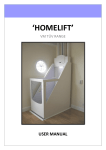
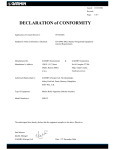
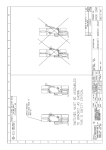

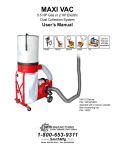
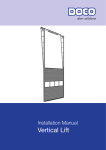
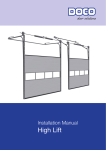
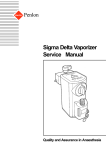
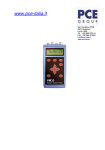
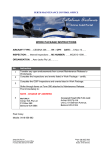




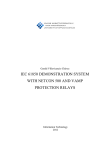
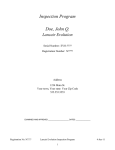
![Fio 2.0 UM ECU [ENG]](http://vs1.manualzilla.com/store/data/005638068_1-6dee15c8bb797972f1fa6aeeeee54189-150x150.png)
